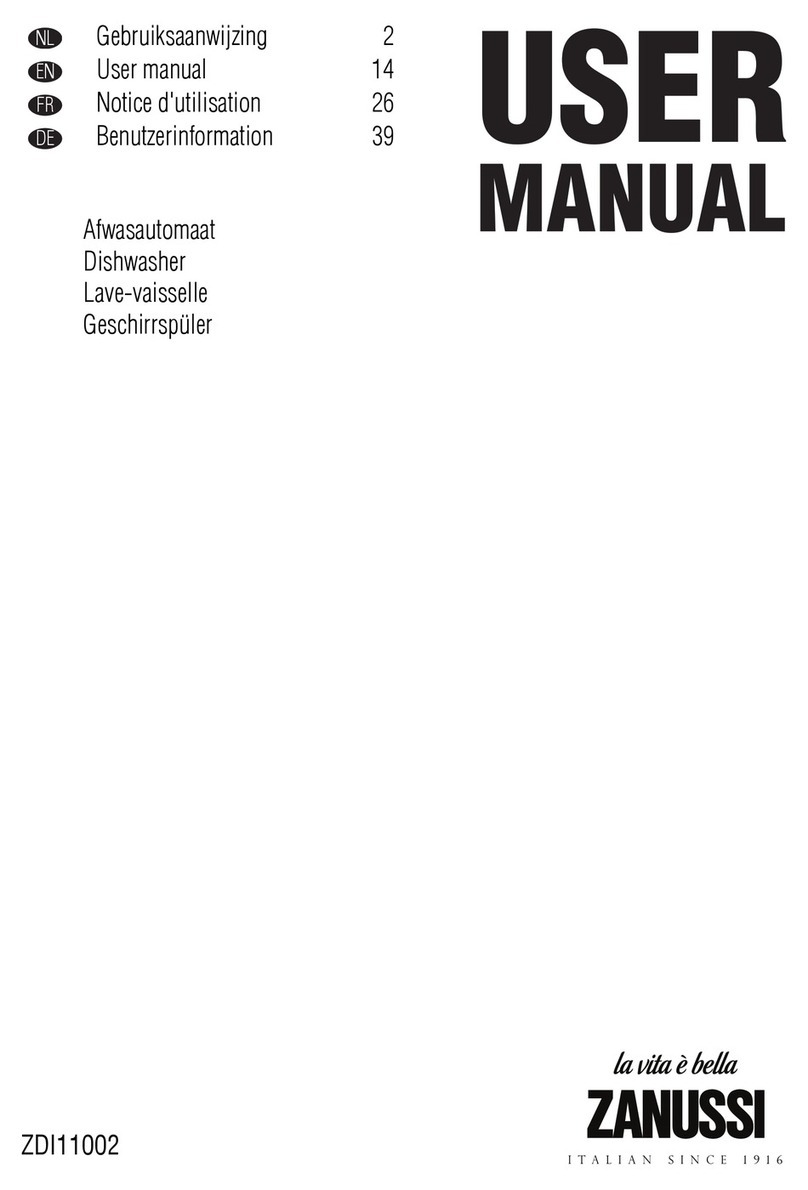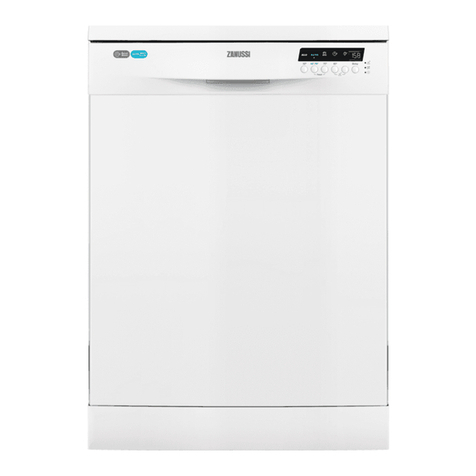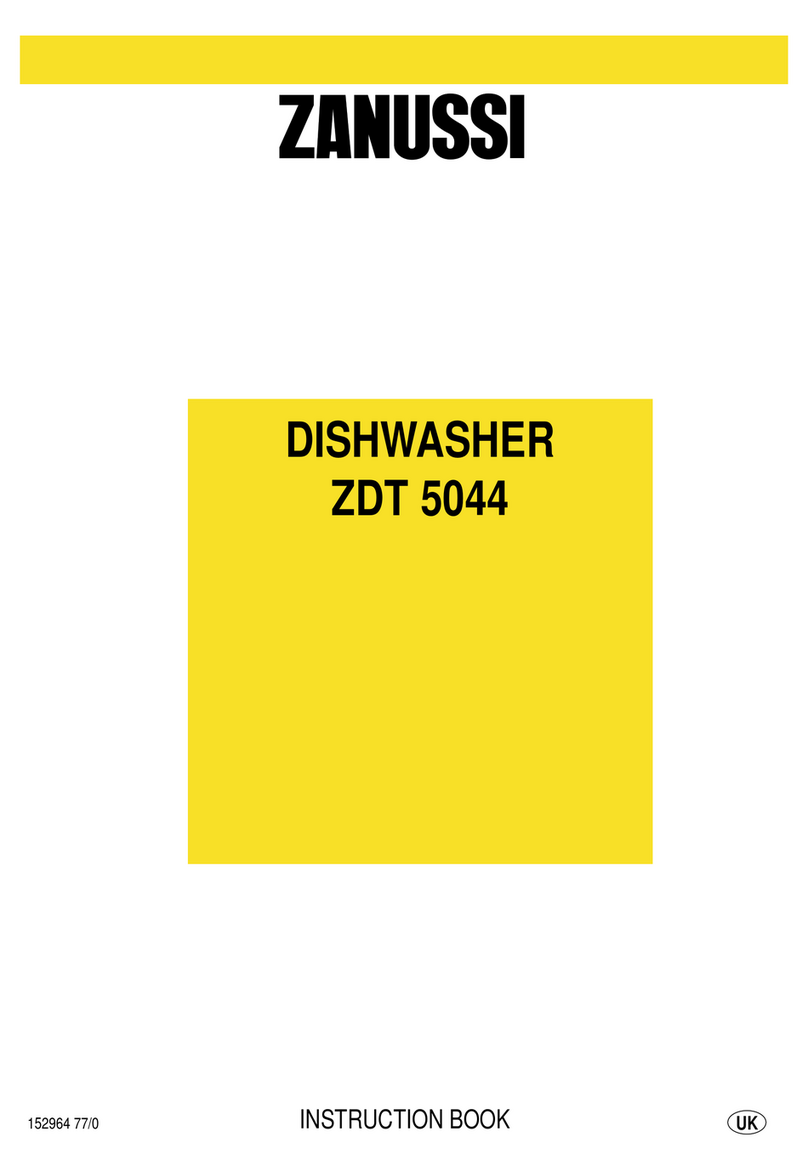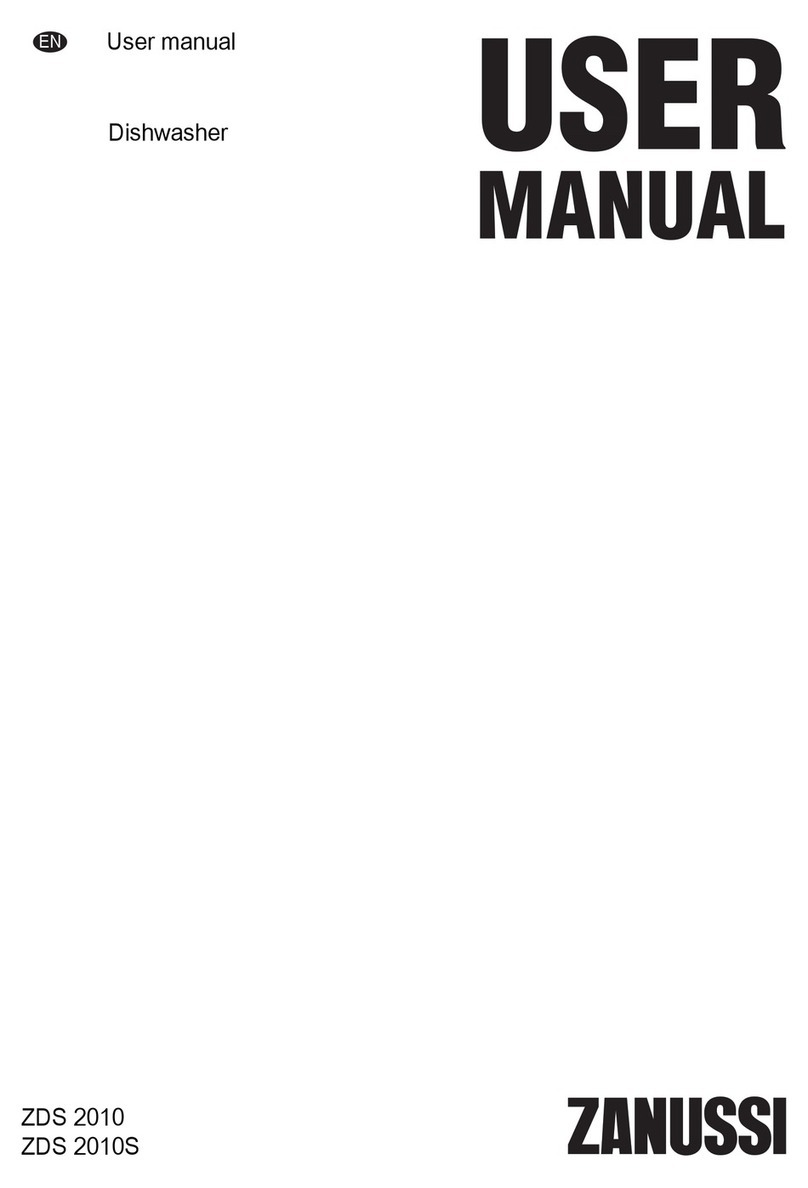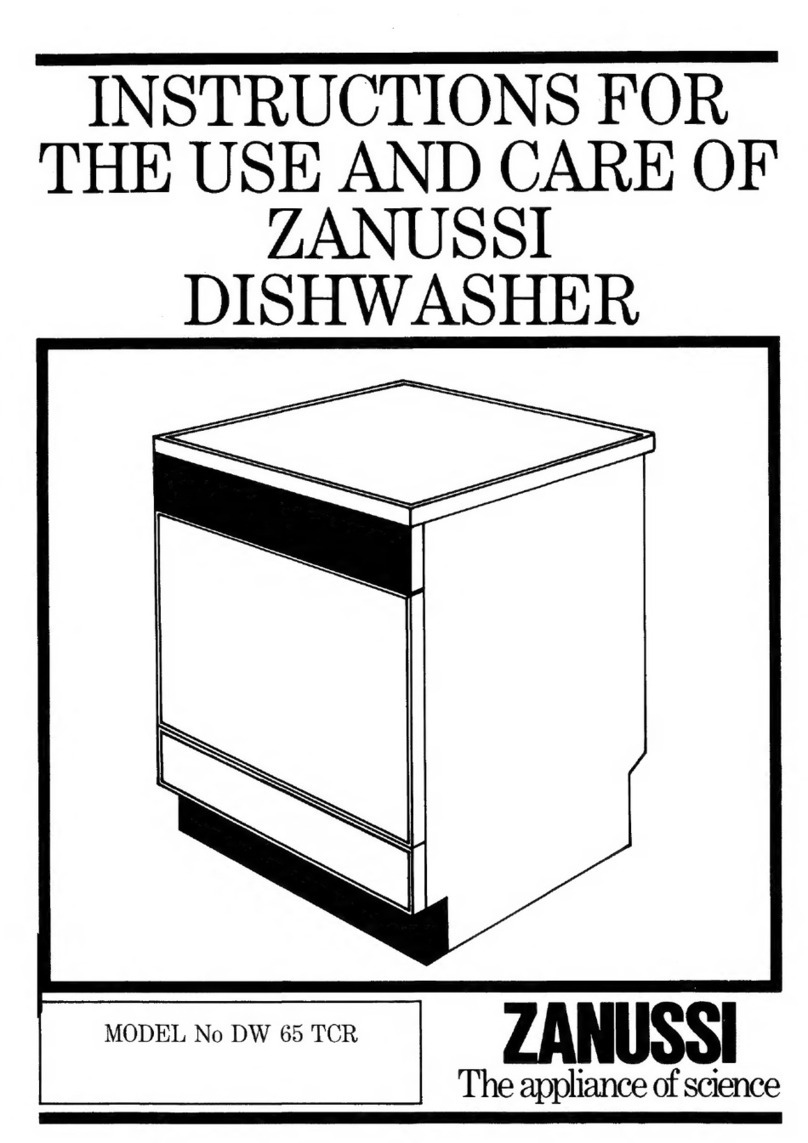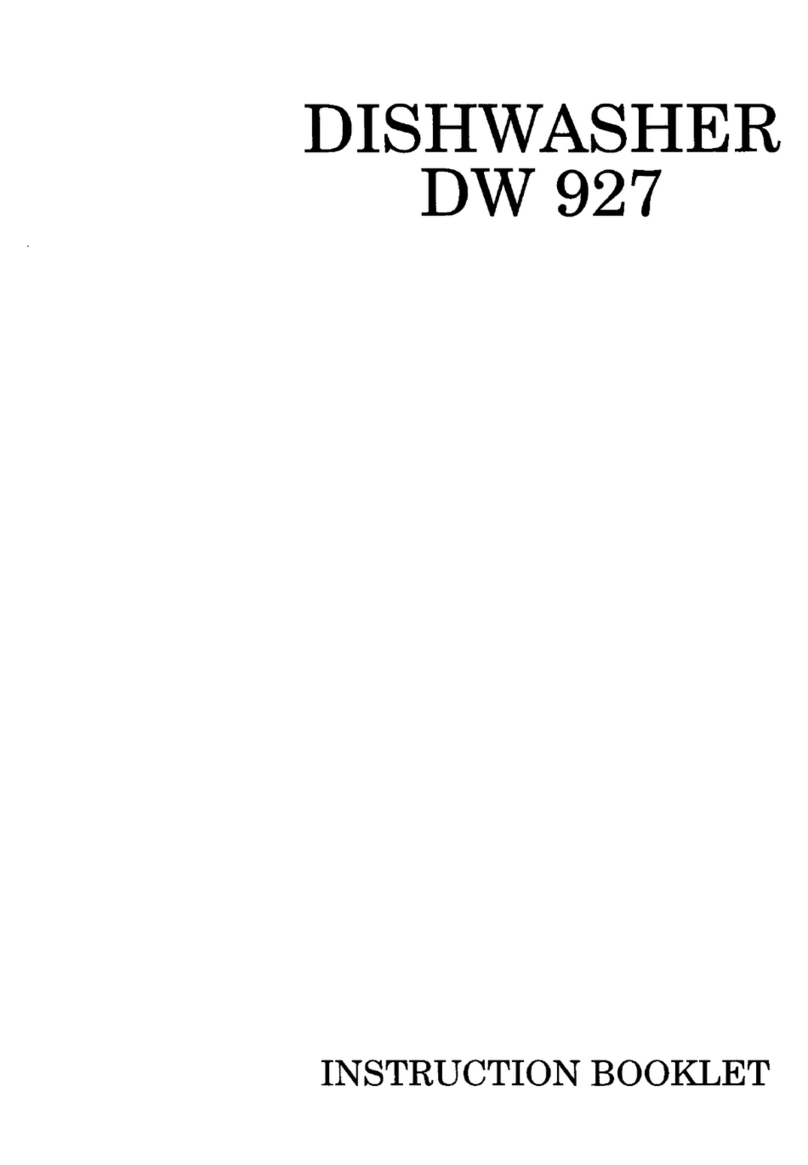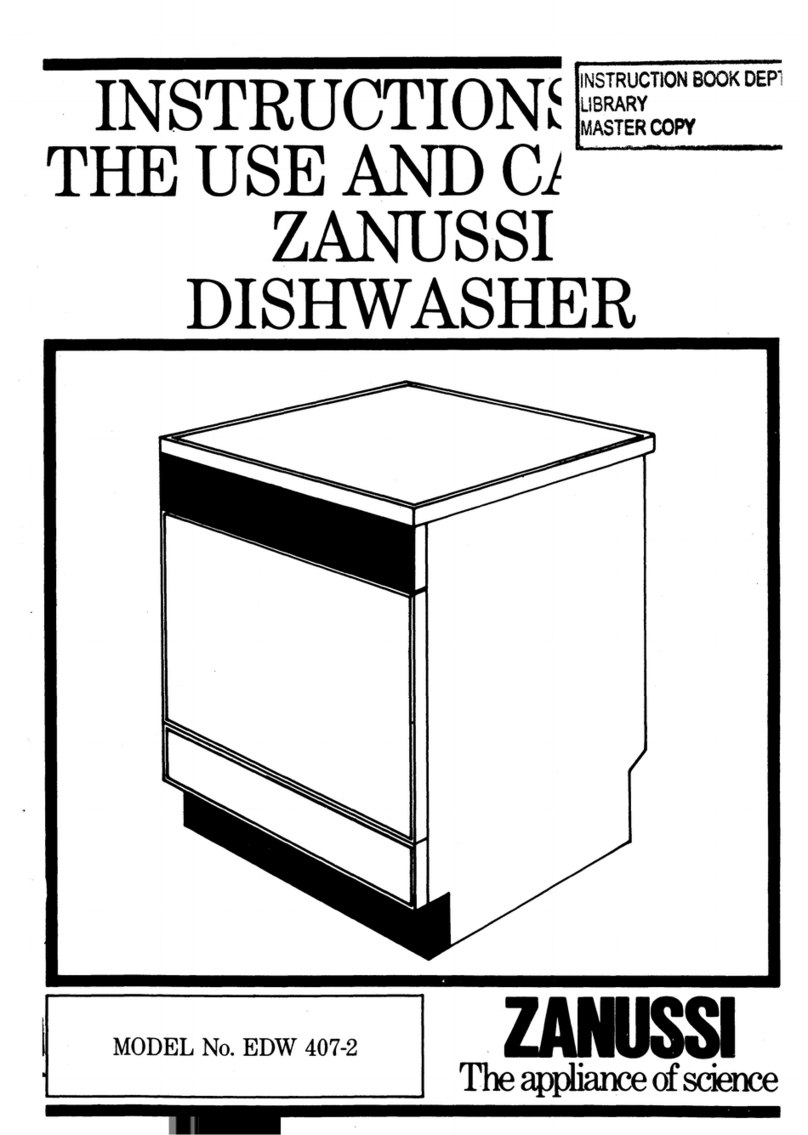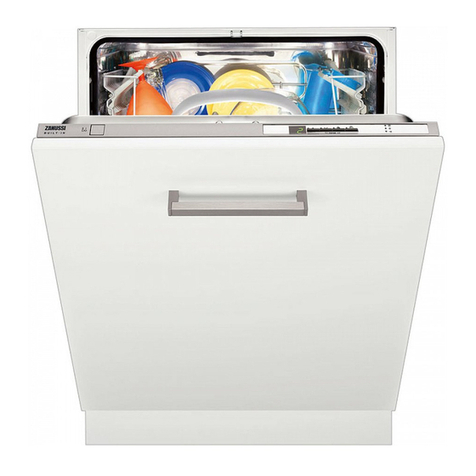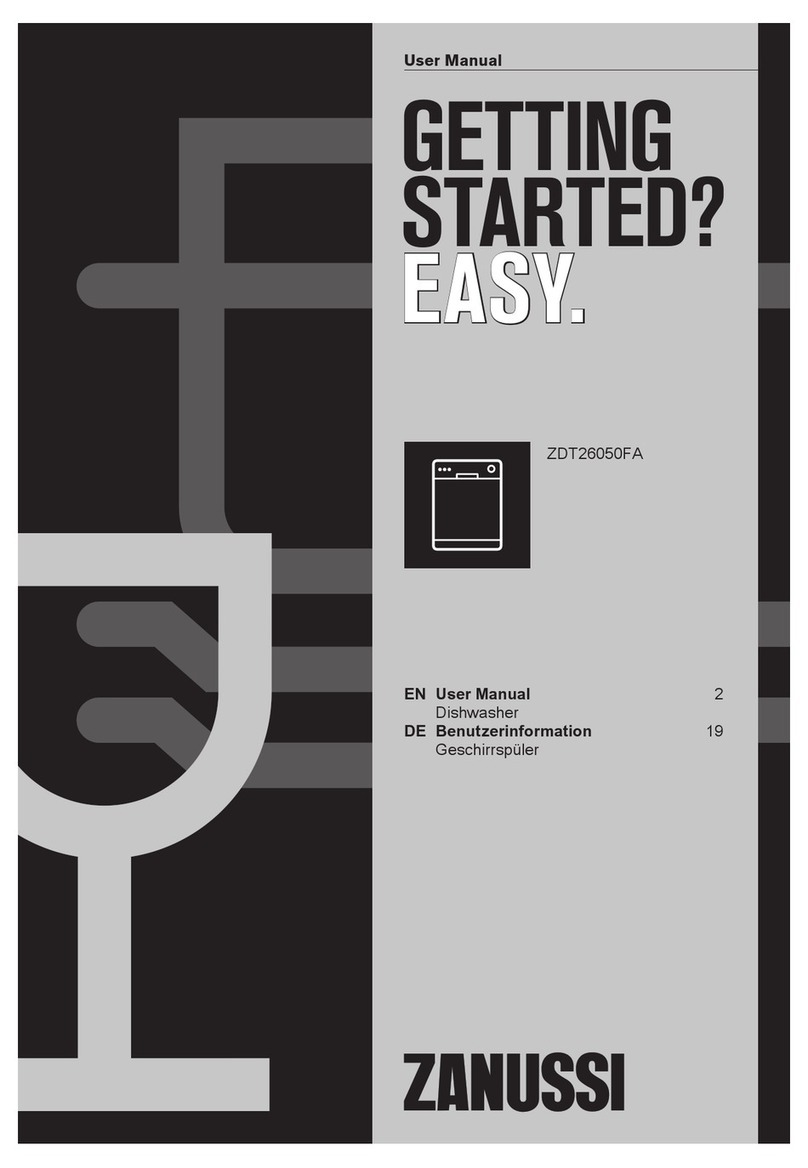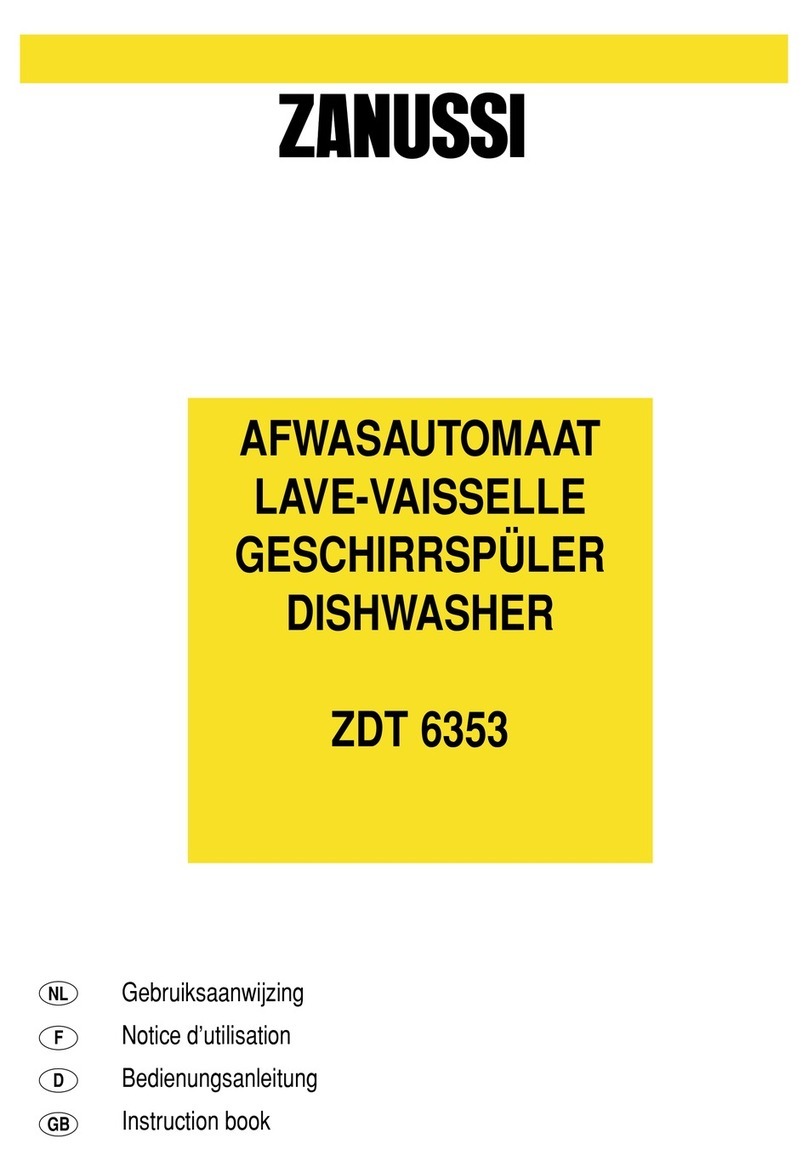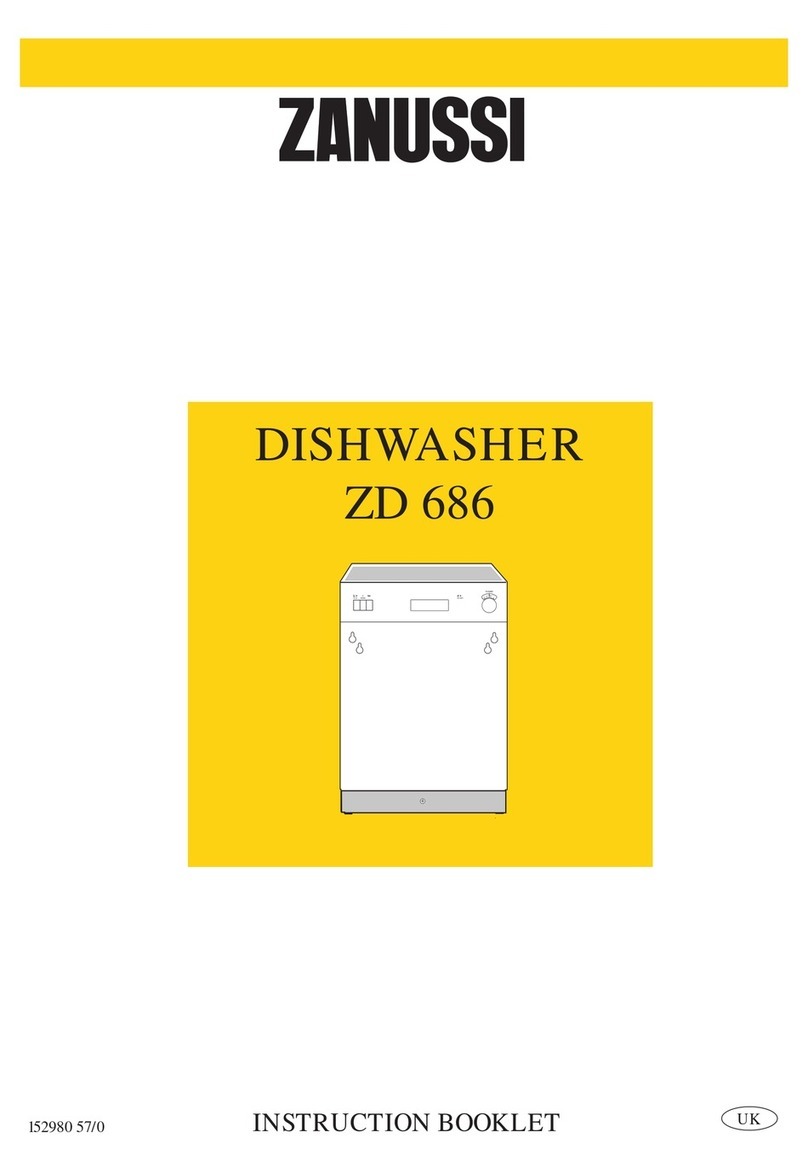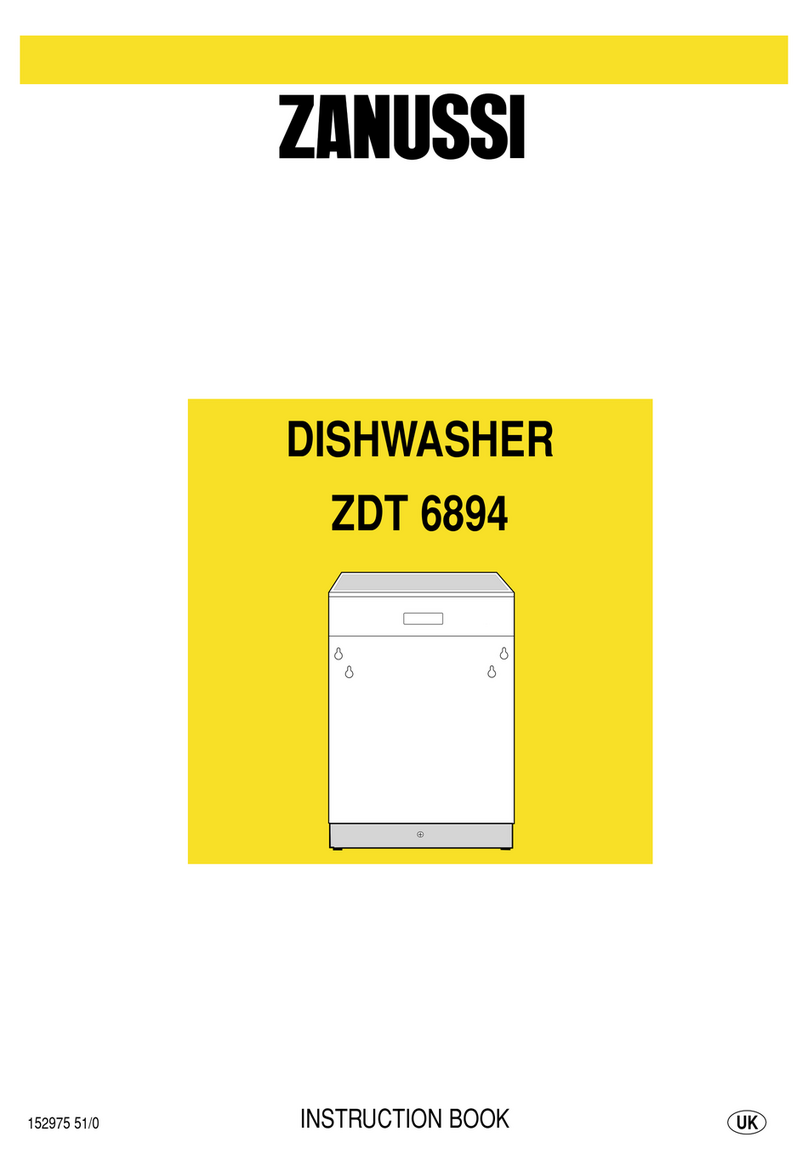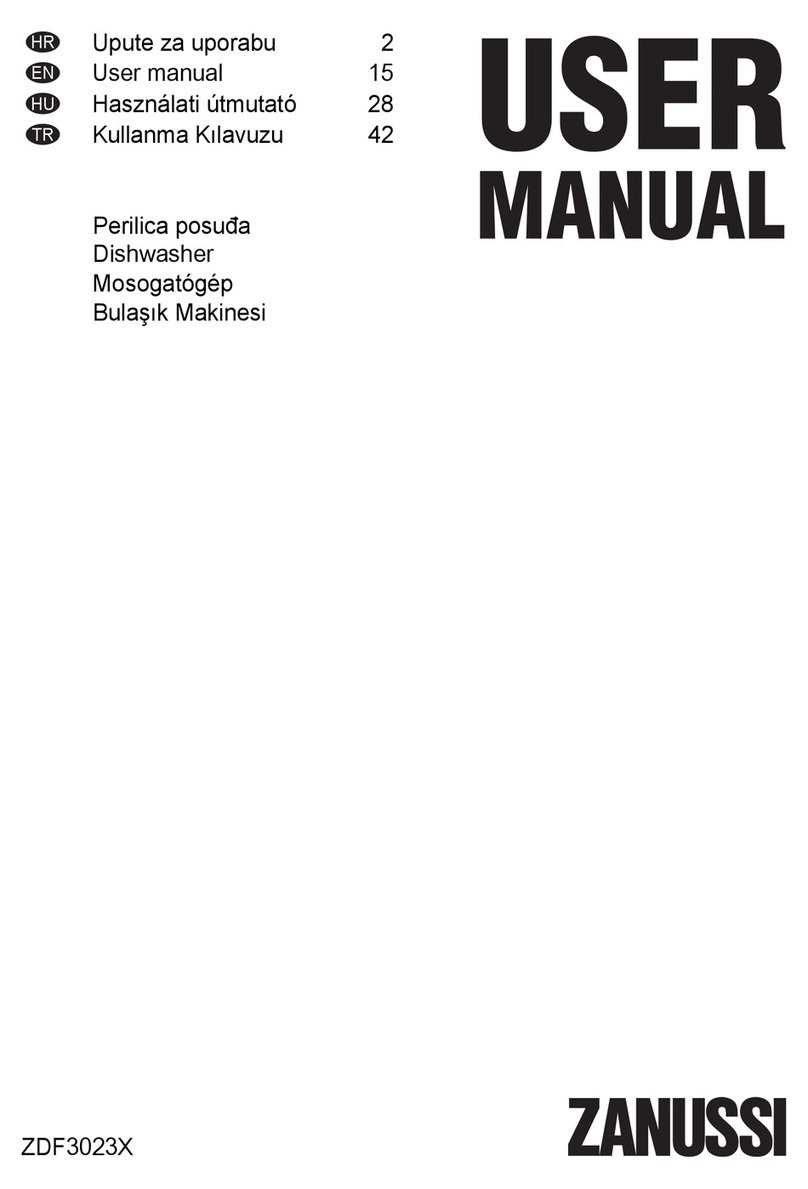Before using your dishwasher for the
first time:
1. Ensure that the electrical and water connections com ly with
the installation instructions
2. Remove all ackaging from inside the a liance
3. Set the water softener
4. Pour 1 litre of water inside the salt container and then fill with
salt
5. Fill the rinse aid dis enser.
6. Run a "Rinse and Hold" rogramme.
Setting the water softener
The dishwasher is equi ed with a water softener designed to
remove minerals and salts from the water su ly, which would
have a detrimental or adverse effect on the o eration of the
a liance.
The higher the content of these salts, the harder your water is.
Water hardness is measured in equivalent scales, Clarke,
French degrees and PPM ( arts er Million).
The softener should be adjusted according to the hardness of
the water in your area. Your local Water Authority can advise you
on the hardness of the water in your area.
The dishwasher is factory set at level 4.
If this level is not suitable for your area the softener should be
adjusted.
If your water is level 0 it is already soft and therefore there
is no need to use salt.
In this case adjust the water softener on level 1 without
using salt.
Only for dishwasher models with salt refill
indicator light:
if the water softener has been adjusted on level 1 without use of
salt, the salt refill indicator light on the control panel will always
remain illuminated when the machine is switched on.
Each push button corresponds to a different level:
Level 1 = programme push button 1
Level 2 = programme push button 2
Level 3 = programme push button 3
Level 4 = programme push button 4
Level 5 = programme push button 5
The adjustment of the water softener is possible only with
the machine in setting mode.
To select a different level, proceed as follows:
1.Press the ON/OFF ush button and then ress and kee
ressed simultaneously for about 5 seconds the ush
buttons 3 and 5.
The indicator light corres onding to the current level flashes.
2.Press the rogramme ush button corres onding to the
required level.
3.5 seconds after having last ressed any of the rogramme
ush buttons, the dishwasher memorises the level selected
and returns to the rogramme setting mode.
Filling with salt
ttention!
Only use salt specifically designed for use in dishwashers.
ll other types of salt not specifically designed for use in
dishwasher, especially table salt, will damage the water
softener.
Only fill with salt just before starting a washing programme.
This will prevent any grains of salt or salty water, which
may have been spilled, remaining on the bottom of the
machine, which may cause corrosion.
To fill:
1. To fill with salt, unscrew the ca of the salt container.
2. Pour 1 litre of water inside the container (this is necessary
only before filling with salt for the first time).
3. Using the funnel (if
rovided), our in the salt
until the container is full.
Do not worry if water over
flows from the unit when
filling with salt, this is quite
normal.
4. Re lace the ca making
sure that there is no trace of
salt on the screw thread or
on the gasket.
5. Screw on the ca tightly.
The salt container will require to ing u eriodically.
According to the model, an indicator reminds you when filling
with salt:
) The salt ca has a refill
indicator window in the
centre. Agreen float is clearly
visible when there is salt
inside the container, and
almost disa ears when the
salt has finished reminding
you to add salt.
B) A salt indicator light on the control anel will come on when
the salt has finished.
The salt indicator light on the control panel can remain
illuminated for 2-6 hours after the salt has been replenished,
assuming the dishwasher remains switched on. If you are
using salts that take longer to dissolve then this can take
longer.
The function of the machine is not affected.
2
Before use
Level Use of
salt
French
degrees
(°TH)
PPM
(Parts er
Million)
Clarke
degrees
0
1
2
3
4
5
NO
YES
YES
YES
YES
YES
0 - 6
7 - 14
15 - 28
29 - 42
43 - 56
57 - 63
0 - 8
9 - 20
21 - 40
41 - 60
61 - 80
81 - 90
0 - 80
81 - 200
201 - 400
401 - 600
601 - 800
801 - 900
Water hardness

